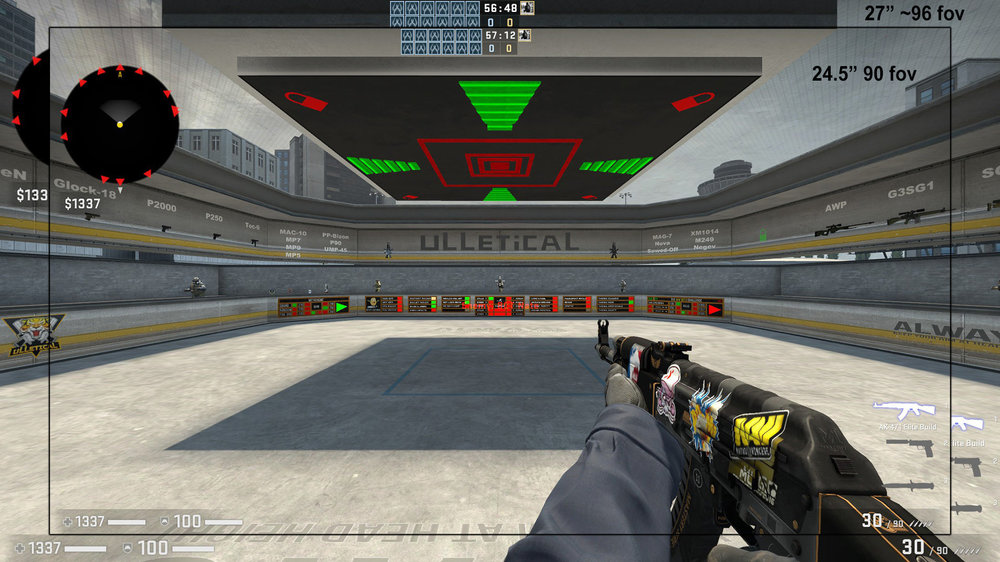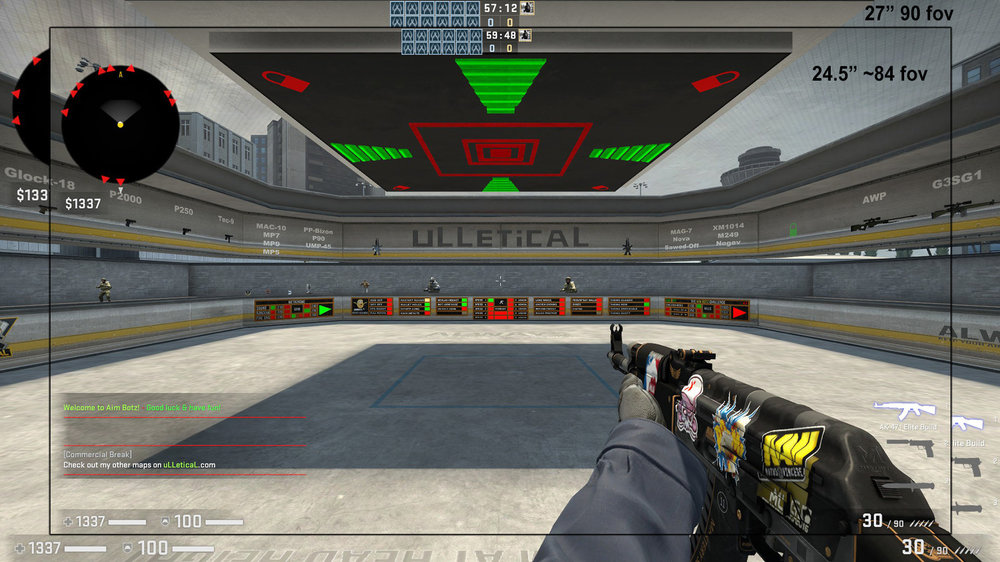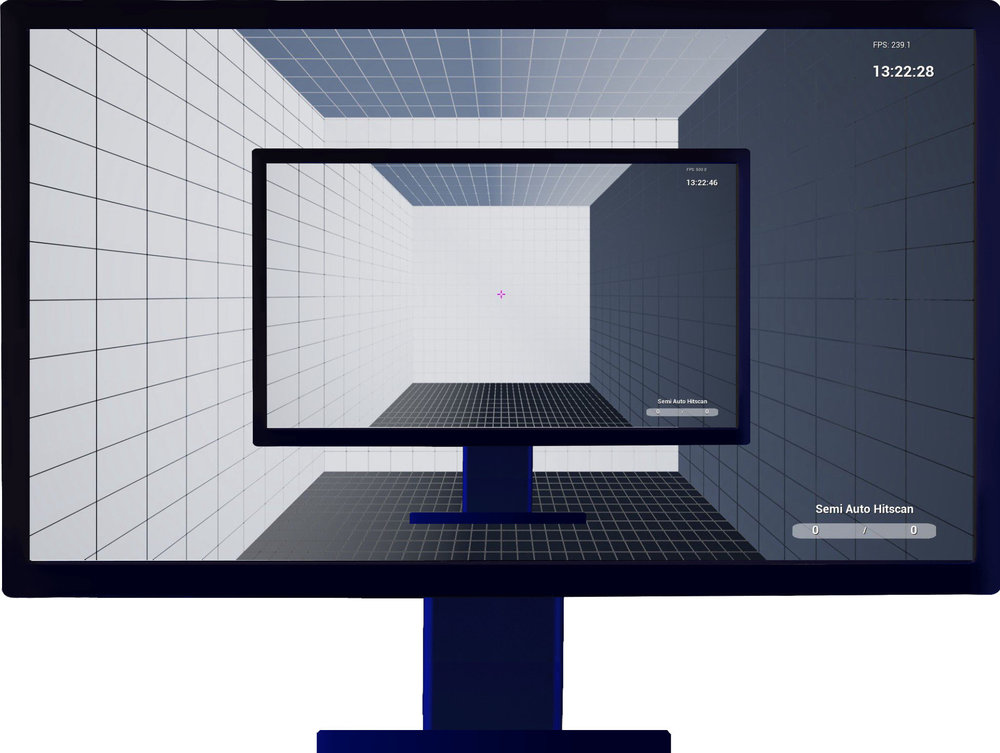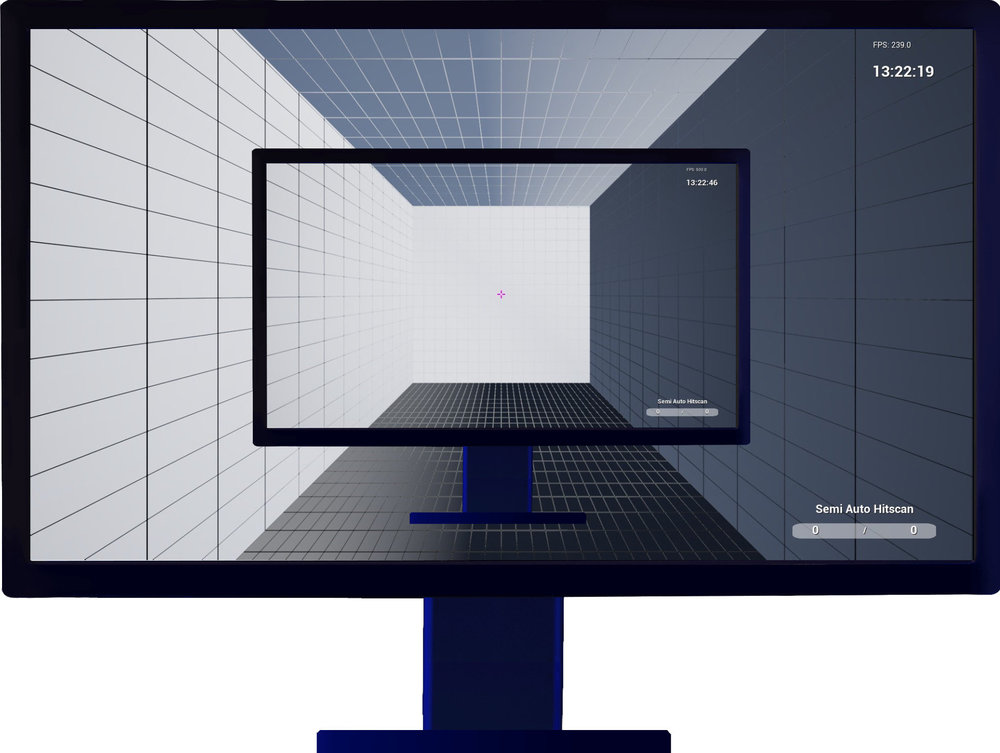-
Posts
1,211 -
Joined
-
Days Won
91
Content Type
Profiles
Forums
Updates
Release Notes
Store
Everything posted by Drimzi
-
1:1 rotation distance is not 1:1 sensitivity. Anyway the game scales the sensitivity using Monitor Distance Match. You will have to pick Legacy (Monitor Distance 0%), or Relative (Coefficient * 100 = Monitor Distance Vertical %). After that, you will have to use the ADS Sensitivity (Low Zoom) multiplier to cancel out the Legacy/Relative system for a specific weapon.
-

WHEN to use monitor distance match vs 360 distance?
Drimzi replied to TempleRxse's topic in Technical Discussion
You're not downscaling to 720p. You're upscaling to 1080p. Two very different things. Image upscaling is pretty much always enabled. You have to go out of your way to disable image upscaling. If you reduce the resolution, it upscales the image to fit the screen, either preserving the aspect ratio or stretching if there is a mismatch between aspect ratios. If you disable image upscaling, then reducing the resolution reduces the physical size of the image. Anyway, the last two images explain. It shows a case where the resolution is cut in half with image upscaling disabled, and it shows that if you reduce the size of the image whilst maintaining the rendered fov, then it's exactly the same as increasing fov. Exactly why it was so popular to reduce the horizontal resolution in Fortnite back in the day. -

WHEN to use monitor distance match vs 360 distance?
Drimzi replied to TempleRxse's topic in Technical Discussion
The physical size of the image does, as it is the same as being at different fovs. If the game is only occupying 1280x720 physical pixels, then it's the same as zooming out by 1.5x (1080/720 = 1.5), which is the same as increasing the fov from 90 to 112.619865. If you are upscaling the image (either aspect ratio, or fullscreen/stretched), then no. The physical size of the image is still the same, just at a lower fidelity. Some image examples of this that I have posted before. -

WHEN to use monitor distance match vs 360 distance?
Drimzi replied to TempleRxse's topic in Technical Discussion
Here is an example of 0% scaling, with a constant 4x zoom in/out. No issues with flicks. -

WHEN to use monitor distance match vs 360 distance?
Drimzi replied to TempleRxse's topic in Technical Discussion
It all depends on how you perceive the distance. I personally recommend 0%. If you can adjust to it, then it's the perfect framework for any playstyle, as the camera is going to respond by the visual change that happens in real-time before you perform the flick. You already know how the camera is going to behave before moving the mouse. -

WHEN to use monitor distance match vs 360 distance?
Drimzi replied to TempleRxse's topic in Technical Discussion
There is no difference besides the %. e.g. 100% of the vertical length corresponds to 56.25% of the horizontal length, since the monitor isn't square. I use vertical because the horizontal length is dynamic. Different horizontal lengths (e.g. 4:3, 16:9) give different results at 0% for some reason. I would recommend 0% if you don't judge the mouse flick distance by the 2D distance between the crosshair and the enemy. -

WHEN to use monitor distance match vs 360 distance?
Drimzi replied to TempleRxse's topic in Technical Discussion
Converting sensitivity is all about making the camera respond in a way that you expect. If you are expecting a very specific wrist flick to always make a 90 degree turn, then you would want to use the 360 distance conversion. If you expect it to always rotate somewhere close to the edge of the screen, then you use a specific monitor distance %. I personally don't think this way, and I want the turn amount to scale by the actual change in the image that I see when I go from hipfire to ADS. If I see the image change by a factor of 2 when I rightclick, then I'm expecting the turn amount to scale by a factor of 2 as well. 0% is going to give me the sensitivity that I am expecting. The other matches only help preserve a very specific characteristic. So I don't bother with them. People probably use a specific distance % at first for the sole intention of matching a distance, but then it later becomes a matter of picking a % that gives a certain speed that they like. After all, the distance % only works between 2 points, no where before or after, and only purely vertical in 100% of cases, and horizontal in a niche case. Diagonal doesn't work because the pitch of the camera affects the yaw, and at a high fov, diagonal movement within your view, is creating a much larger deviation in pitch compared to a low fov. -

WHEN to use monitor distance match vs 360 distance?
Drimzi replied to TempleRxse's topic in Technical Discussion
Use 360 distance when you want to preserve navigational movement. Use a different method to preserve aiming movement. The choice is yours. I personally use 0% monitor distance vertical for everything. -
Pretty sure they were using a look up table, with hard coded multipliers for each fov. According to recent patch notes, they changed it to have a toggle for 0% mm, or no scaling at all, with a simple multiplier similar to overwatch. The whole system should be the same as KovaaKs.
-

"Scale the sensitivity with the change in focal lenght"
Drimzi replied to Ephant's topic in Technical Discussion
I didn't watch the video. If you are referring to monitor distance being flawed, and focal length being the "correct way", then yes. If the output image changes by x, then you change the rotation by x as well to preserve the sensitivity of the device. If someone is using the monitor distance match framework for the sole intention of matching a distance, then yes it is flawed, as that is only going to happen between 2 exact points, under conditions that will pretty much never happen. It will only happen with 100% certainty if it is a vertical movement. For horizontal movement, the crosshair has to be at the equator. For diagonal movement, it will only be somewhat close if you have an extremely low fov, as aiming within your view is hardly going to affect the absolute pitch. You will still technically be near the equator. The higher the fov, the more the absolute pitch is going to change as your aim moves vertically within your view. At a high enough fov, flicking to the top of the screen may have you looking directly up, and at that point, the edge of your monitor is going to be unreachable with pure horizontal movement. I don't think anyone really understands or cares about that though, and instead use a monitor distance percentage that gives them a certain feel/speed that they are comfortable with, rather than matching a distance. -

"Scale the sensitivity with the change in focal lenght"
Drimzi replied to Ephant's topic in Technical Discussion
0% monitor distance match scales by the change in focal length. -
Good find. The actual fov is ~96% of the configured value, so it sounds reasonable. Don't know why they would deliberately offset it though.
-

What % of monitor distance should I put?
Drimzi replied to zlFrosT's topic in General Gaming Discussion
You don't have to do any conversion, but yes 0% vertical distance is the most fool-proof one. Horizontal will incorrectly give you a wrong sensitivity. As you can see, your sensitivity did not change, which is correct. -

What % of monitor distance should I put?
Drimzi replied to zlFrosT's topic in General Gaming Discussion
The fov itself doesn't matter. You could effectively reduce the fov by placing both of your hand on your screen. It's only the zoom that matters. The zoom is the transformation, it affects scale and speed (i.e. if you do a 2x zoom, objects appear to be 2x larger, and move 2x faster). When a zoom happens, you have to apply that transformation to your sensitivity as well, using 0% monitor distance match. In your case, there is no zoom. You don't have to change the sensitivity. You are stretching the game though, and there is no way to make it feel normal. -

What % of monitor distance should I put?
Drimzi replied to zlFrosT's topic in General Gaming Discussion
Your 1:1 FOV is still identical. You have 92.35 vertical and horizontal within the 1:1 portion of the screen. The game hasn't zoomed in/out. No sensitivity change is required. How can it have no black borders? Are you stretching? You can't match sensitivities between non-stretched and stretched. Your sensitivity is going to be stretched just like the image. -

What % of monitor distance should I put?
Drimzi replied to zlFrosT's topic in General Gaming Discussion
1. If you are changing the aspect ratio (like cropping off the sides), and the 1:1 fov is still the same, then you don't need to change the sensitivity. All that happens in this case is that you "turned off" some pixels. You can achieve the same thing by taping some black paper to the sides of your screen. 2. If a game uses horizontal FOV (not vertical, 4/3, or 16/9), then reducing the horizontal width essentially makes the game zoom out, as it needs to maintain that fov but within a smaller area, and you would then need to change the sensitivity. In YOUR case, with Apex Legends, it is case #1, and you don't need to change the sensitivity. -

What % of monitor distance should I put?
Drimzi replied to zlFrosT's topic in General Gaming Discussion
You don't have to use any other percentage. If you are using 0%, then you scale by the change in zoom, which is what 0% does, but it does it indirectly under the monitor distance framework. This only works properly if the input and output game have the same resolution and monitor size. The calculator isn't really set up to convert between monitors using the zoom framework. You have to do it manually, or just ignore it. To understand why monitor size would affect the sensitivity, just imagine two identical games on two different monitor sizes, let's just say one is 30" and the other one is half it's size, at 15". If they both have the same fov, but the 15" monitor has that fov within half the physical size compared to the 30", then the 30" needs to zoom out by a factor of 2 to get the same information within the 15" portion of it's screen. The 30" essentially needs a much higher fov to match the 15". Once that is achieved, and they both have the same amount of virtual information in the same amount of physical space, then they can both have the same cm/360°. If you just leave them as is with both having the same fov (first picture), then the 30" should have double the cm/360° compared to the 15". The calculator doesn't really understand this, as it just uses the fov values, and sees that both cases have the same fov, and should have the same cm/360°. The monitor size variable in the calculator is just used for cursor measurements AFAIK. -

What % of monitor distance should I put?
Drimzi replied to zlFrosT's topic in General Gaming Discussion
You don't have to change anything as the sides are getting cropped off, without affecting the zoom. You still have the same information within the 768x768, and the 1024x768 portion of your screen, the rest is just not rendered in. -

%100 MDH in Desktop %0mm in games is it ruin my muscle memory?
Drimzi replied to Pyroxia's topic in Technical Discussion
I'm curious if it still feels weird if you try 2D in a more fair comparison. mcOsu has a firstperson mod (not FPoSu), which is 2D osu!, but you move the screen instead of the cursor. -

%100 MDH in Desktop %0mm in games is it ruin my muscle memory?
Drimzi replied to Pyroxia's topic in Technical Discussion
You are judging it by flicks and distance. The mouse distance to flick to the edge of the screen is only going to be similar to 2D if you are at an extremely low fov. 2D is essentially 0 FOV, completely flat. As your fov increases, so does the curvature. You would have to decrease the sensitivity, and use 100% mm if you wanted flicks to the edge of the screen at an fov that isn't 0. -

Roblox: Phantom Forces Unsupported
Drimzi replied to PBiddle9's topic in Feedback, suggestions and bugs
It's because he's using a different weapon. There are tons of weapons, each with a unique magnification. -
Convert with 0% monitor distance if you have 0.8 multiplier across the board in Apex, as Apex uses 0% and you have added a 0.8 multiplier on top of that (which can be replicated with a DPI switch).
-
Chipset are NULL drivers. They don't do anything. The USB drivers will directly impact the mouse though. Different driver versions can be Line-Based or MSI-based for CPU interrupts, with different settings like message limits, and interrupt affinities. Other drivers can indirectly affect the mouse as well, due to potential IRQ stacking with the USB controller, and their interrupts taking away valuable CPU time needed by the mouse, which can make polling a little unstable.







